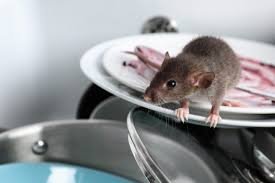Rodents and wild animals may seem harmless in nature, but once they enter your property, they can cause significant problems. From chewed wires and structural damage to serious health hazards, these intruders are more than just a nuisance. Rodent & Wildlife Control are essential for keeping homes and businesses safe, healthy, and secure from uninvited guests.
The Dangers of Rodents and Wildlife Indoors
Rodents like mice and rats are notorious for squeezing through tiny gaps to find shelter, food, and warmth. Once inside, they:
- Chew through walls, electrical wiring, and insulation
- Contaminate food supplies with urine and droppings
- Multiply quickly and form large colonies
- Spread dangerous diseases such as hantavirus, leptospirosis, and salmonella
Wildlife species such as raccoons, squirrels, skunks, bats, and opossums may also invade attics, crawlspaces, or sheds. These animals can:
- Damage roofing and ventilation systems
- Rip apart insulation and ducts
- Introduce fleas, ticks, or mites into your home
- Act aggressively if cornered or protecting offspring
Because they pose physical and health-related threats, prompt and professional intervention is the best way to handle these issues.
Inspection: The First Step in Control
Every successful rodent and wildlife control plan starts with a comprehensive inspection. Licensed technicians examine your property to:
- Identify entry points like holes, vents, and open pipes
- Locate nests, droppings, tracks, and chew marks
- Determine the species and the extent of the infestation
- Spot signs of damage or contamination
Once the situation is fully assessed, a personalized treatment and exclusion plan is developed to ensure safe, humane, and effective results.
Safe Removal and Exclusion Techniques
Modern rodent and wildlife control goes far beyond setting traps. It focuses on long-term prevention and humane methods. Strategies may include:
- Sealing entry points with wire mesh, caulk, or steel wool
- Installing one-way exclusion doors to allow animals out but not back in
- Live trapping and relocation for larger wildlife
- Use of tamper-resistant bait stations in rodent-prone zones
- Cleaning and sanitizing contaminated areas to remove pheromones and bacteria
Technicians also provide recommendations to reduce future attractants such as unsecured trash, pet food, standing water, or dense vegetation near the home.
The Importance of Ongoing Monitoring
Even after successful removal, it’s crucial to maintain routine inspections and monitoring. Rodents and wildlife are persistent and can return if given the chance. Ongoing services ensure:
- Repaired damage remains intact
- No new entry points form
- Populations don’t re-establish over time
Many pest control companies offer seasonal monitoring packages to keep your home protected year-round.
Conclusion: Stay Ahead of the Invaders
Rodent and wildlife invasions aren’t just inconvenient—they’re dangerous and damaging. By acting quickly and choosing a trusted control service, you protect your family, pets, and property. Don’t wait until you hear scratching in the walls or see droppings on the floor. Call a rodent and wildlife control expert today and reclaim the safety and comfort of your space.


